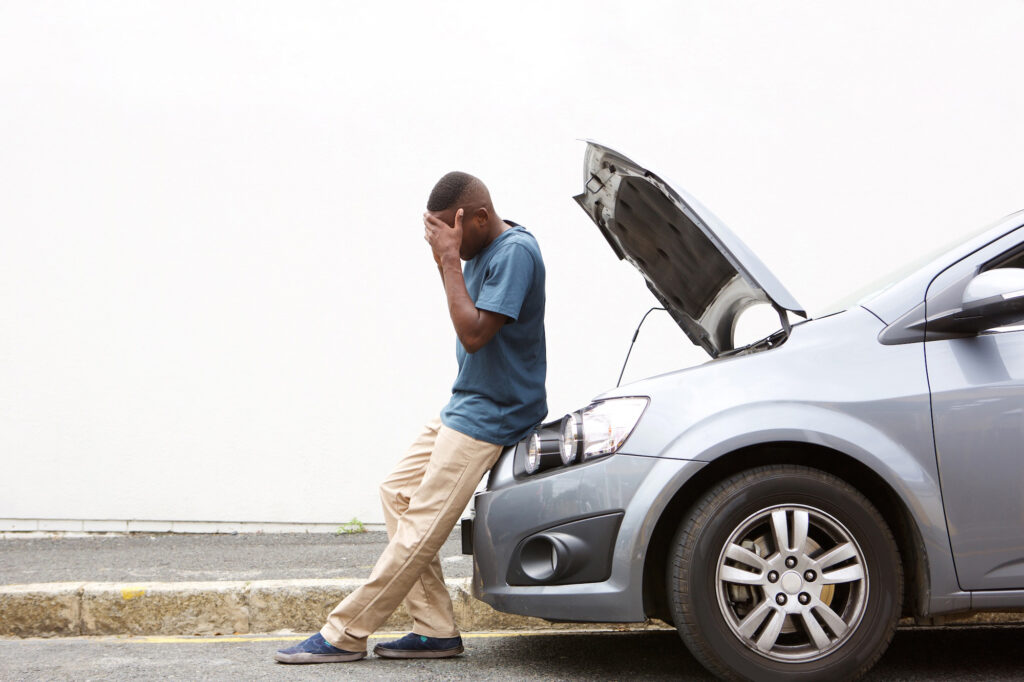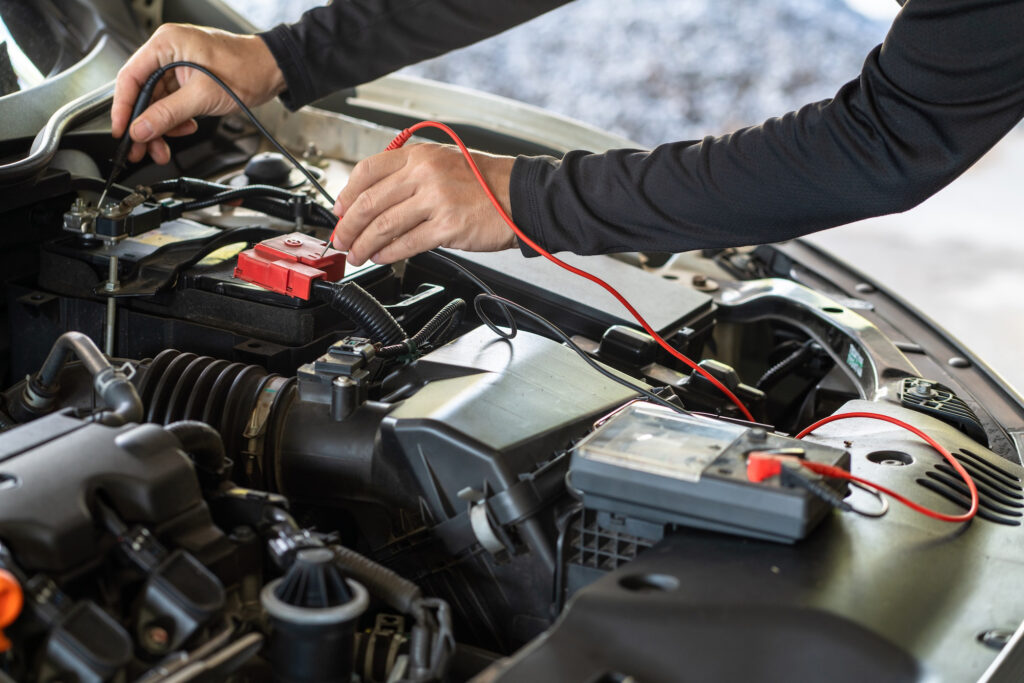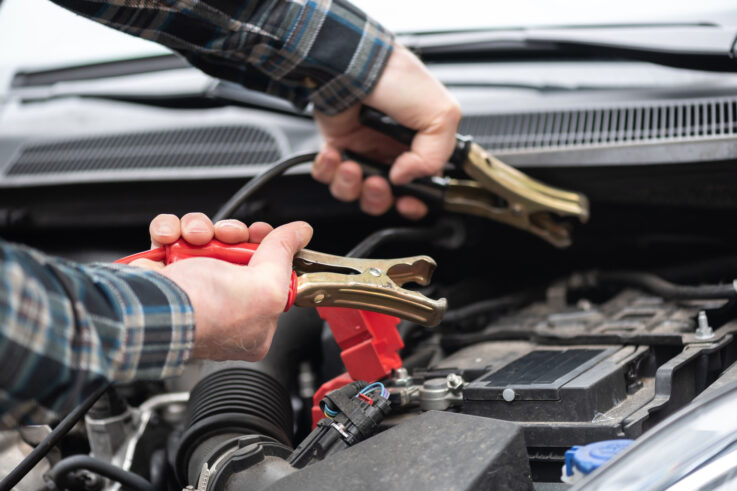Your car battery is the heart of your vehicle’s electrical system, powering everything from the engine to the lights. But like any vehicle component, it has a limited lifespan. While most batteries last 3 to 5 years, factors like driving habits and weather conditions can shorten that time. Noticing the signs of a dying battery early can save you from the frustration of being stranded or dealing with unexpected breakdowns.
Common Symptoms of a Dying Car Battery
Slow Engine Crank
One of the first signs of a dying battery is a slow engine crank. If you notice your engine struggling to start or taking longer than usual to turn over, your battery could be on its way out. This symptom can occur in any weather, though it’s often more pronounced in cold temperatures, which put extra strain on the battery.
Dim Headlights
If your headlights seem dimmer than usual, this could be another red flag. As your battery weakens, it won’t be able to provide enough power to your car’s electrical system, causing headlights and interior lights to lose brightness. Pay attention to this sign, especially when driving at night.
Dashboard Warning Light
The battery warning light on your dashboard is an important signal that shouldn’t be ignored. While it doesn’t necessarily mean the battery is completely dead, it indicates that the battery is struggling to hold a charge. If this light comes on, it’s a good idea to have your battery tested or checked by a mechanic.
What Causes a Car Battery To Die?

Your Battery’s at the End of Its Lifespan
Like all vehicle parts, your battery degrades over time. As it ages, its ability to hold a charge weakens. Most batteries last between 3 to 5 years, but older batteries can be more prone to sudden failure.
Corroded Terminals Are Reducing Power Efficiency
Corrosion around the battery terminals can lead to poor electrical connections, making it harder for your battery to power the vehicle. Watch for a white, ashy substance around the terminals — this is sulfuric acid buildup and is a clear sign of corrosion.
Short Drives Are Preventing Full Battery Charge
If you frequently take short trips, your battery may not have enough time to fully recharge as you drive. This incomplete charging cycle can wear out your battery more quickly and reduce its overall lifespan.
Extreme Temperatures Are Draining Battery Life
Both hot and cold weather can affect your battery’s performance. Cold temperatures can slow down chemical reactions inside the battery, making it harder to start your car, while hot weather can cause internal components to degrade faster.
Signs of a Dead Car Battery vs. a Failing Alternator
When your battery is completely dead, the car won’t start at all, no matter how many times you try. You’ll likely experience dim or non-working headlights, and the engine won’t respond when you turn the key.
A failing alternator can cause symptoms similar to those of a dying battery. However, alternator issues typically occur while you’re driving. Lights may flicker or dim while the engine is running, and you might hear unusual sounds like grinding or whining coming from the engine.
How To Check If Your Car Battery Is Failing

If your car is showing signs of battery trouble, it’s important to check it before it leaves you stranded. Luckily, there are a few simple ways to determine if your battery is on its way out. Here’s how to assess the health of your car battery and know when it’s time for a replacement:
- Do a quick visual inspection: Look for corrosion on the battery terminals, cracks in the battery case or any signs of the battery bulging, which indicates internal damage.
- Conduct a battery voltage test: A multimeter can give you a good indication of your battery’s health. A healthy battery should show a reading of around 12.6 volts when the car is off. Anything significantly lower could mean it’s time for a replacement.
- Watch for your check engine light: If your check engine light comes on and you’re experiencing other electrical issues, it may be related to your battery. Be sure to get it checked out, especially if it coincides with other signs of a failing battery.
What To Do if Your Car Battery Dies
How To Jump-Start Your Car
If your battery dies, jump-starting the car can get you back on the road temporarily. Here’s a quick step-by-step guide:
- Park another car close enough for jumper cables to reach.
- Turn off both vehicles and connect the positive (red) cable to the positive terminal of the dead battery.
- Connect the other end of the positive cable to the working battery.
- Attach the negative (black) cable to the negative terminal of the working battery.
- Connect the other end of the negative cable to an unpainted metal surface on the engine of the car with the dead battery.
- Start the working car, then attempt to start your car. Be sure to follow proper safety precautions when jump-starting a vehicle.
When To Replace the Battery
If your battery is older than 3 to 5 years or has shown consistent signs of weakness, it’s probably time to replace it. Don’t wait for the battery to die completely before taking action.
Preventative Maintenance for Extending Battery Life
Regular maintenance can go a long way toward extending the life of your car’s battery. Here are a few ways you can prevent premature battery failure:
- Inspect and clean regularly: Check your battery terminals for signs of corrosion, clean off any buildup and ensure the connections are secure.
- Minimize power drains: Make sure to turn off all lights, the radio and other electronics when your car isn’t running to avoid unnecessary strain on your battery.
- Protect against extreme weather: Both hot and cold weather can reduce battery life. If possible, park your car in a garage or shaded area to shield it from harsh temperatures.
By paying attention to these warning signs and maintaining your battery, you can avoid unexpected breakdowns and ensure your car runs smoothly. If you notice any of the symptoms mentioned, it’s best to have your battery tested and replaced if necessary to keep you on the road without trouble.
By paying attention to these warning signs and maintaining your battery, you can avoid unexpected breakdowns and ensure your car runs smoothly. If you notice any of the symptoms mentioned, it’s best to have your battery tested and replaced if necessary to keep you on the road without trouble.


